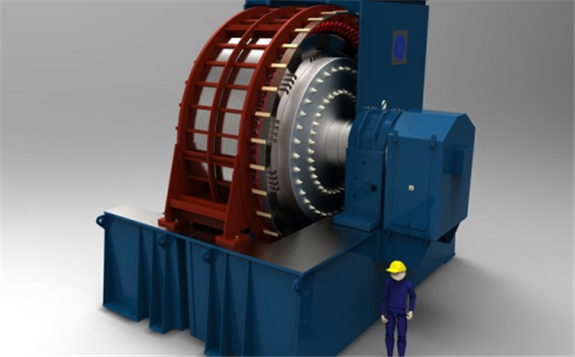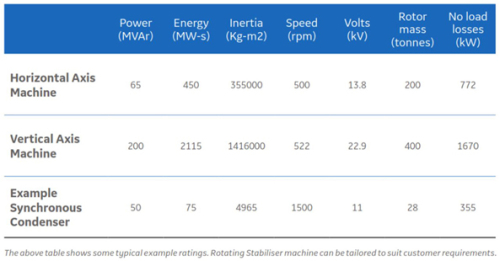Statkraft, Europe’s largest generator of renewable energy, has agreed to a deal to help further decarbonize the UK’s power sector and deliver a new approach to managing the stability of the grid. Statkraft UK will install GE’s Rotating Stabilizer technology—i.e., giant flywheels—at its stability project at Keith in the northeast of Scotland. The deal comes at a critical time for the UK energy sector as it adapts to a “new normal”, with the country’s energy mix experiencing a growth in renewable power.

GE Power Conversion will manufacture and install two Rotating Stabilizer synchronous machines at Statkraft’s site in Keith, Moray.
GE’s Rotating Stabilizers are high-inertia rotating machines that can support the grid network in delivering efficient and reliable synchronous inertia and can help stabilize frequency deviations by generating and absorbing reactive power.
Rotating Stabilizers can help reduce emissions and maintain grid performance by providing the same synchronous inertia as coal or gas power plants without the associated CO2 emissions and high running costs. This flexible technology can be deployed as/when required by the system operator.
GE’s Rotating Stabilizers have three operating modes:
Synchronous inertia support to the grid with instantaneous response to change in grid frequency.
Power factor correction to provide continuous leading or lagging VArs.
High power pulse generation enabling a high-power pulse from a weak power source.
Example ratings for Rotating Stabilizers.

Statkraft was awarded four stability contracts (2 at Keith and 2 at Lister Drive) by National Grid ESO (NGESO) earlier this year.
In delivering the project for National Grid ESO, Statkraft UK and GE Power Conversion will provide stability services to help keep the electricity system stable, such as inertia, short circuit level and frequency. This has traditionally been provided by using the kinetic energy in the spinning parts of large generators when they were providing electricity onto the grid. The rise of non-synchronous generators such as solar, wind and interconnectors mean these services are now more important and are being procured separately.